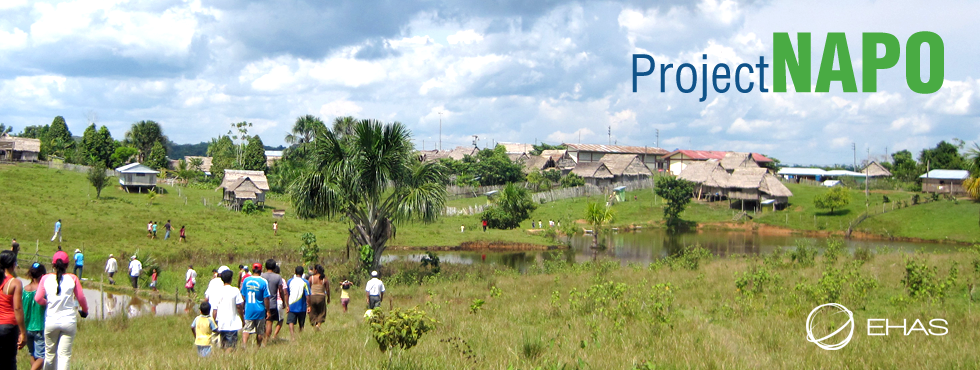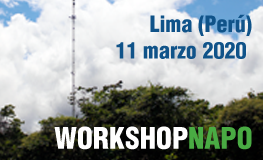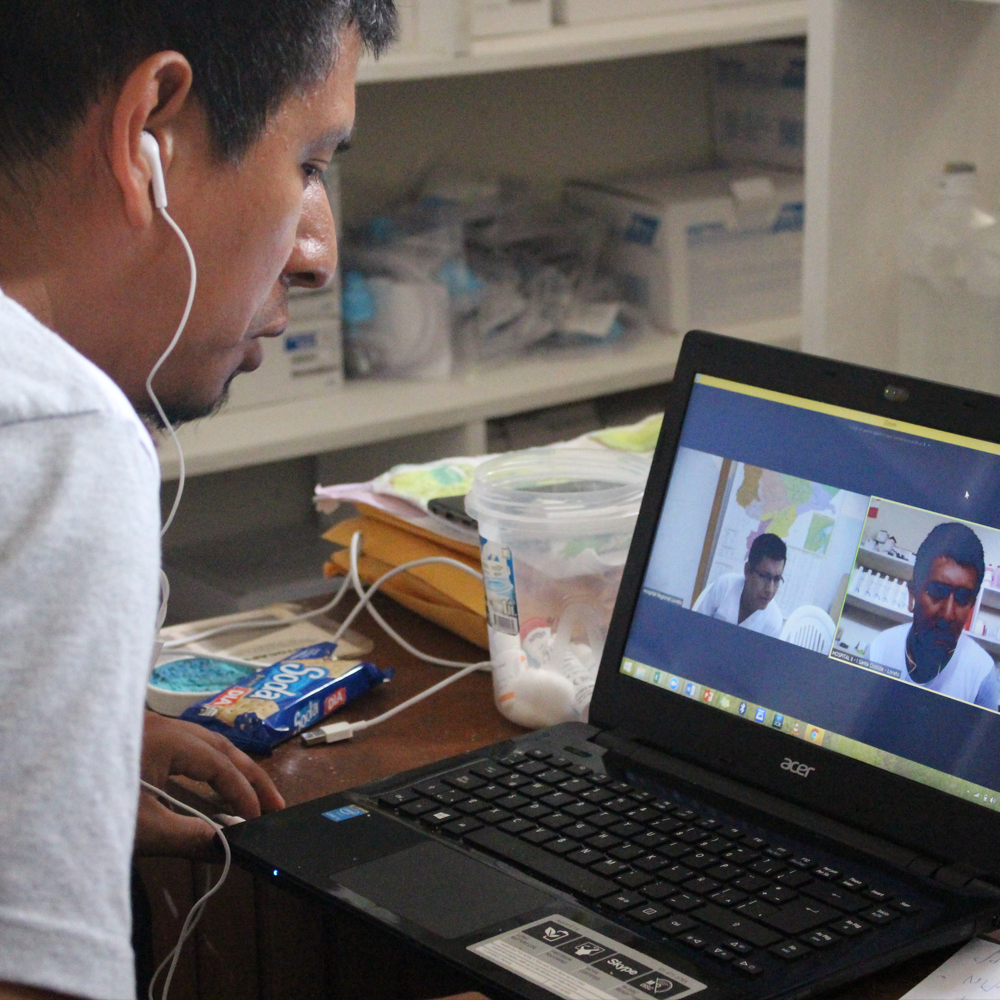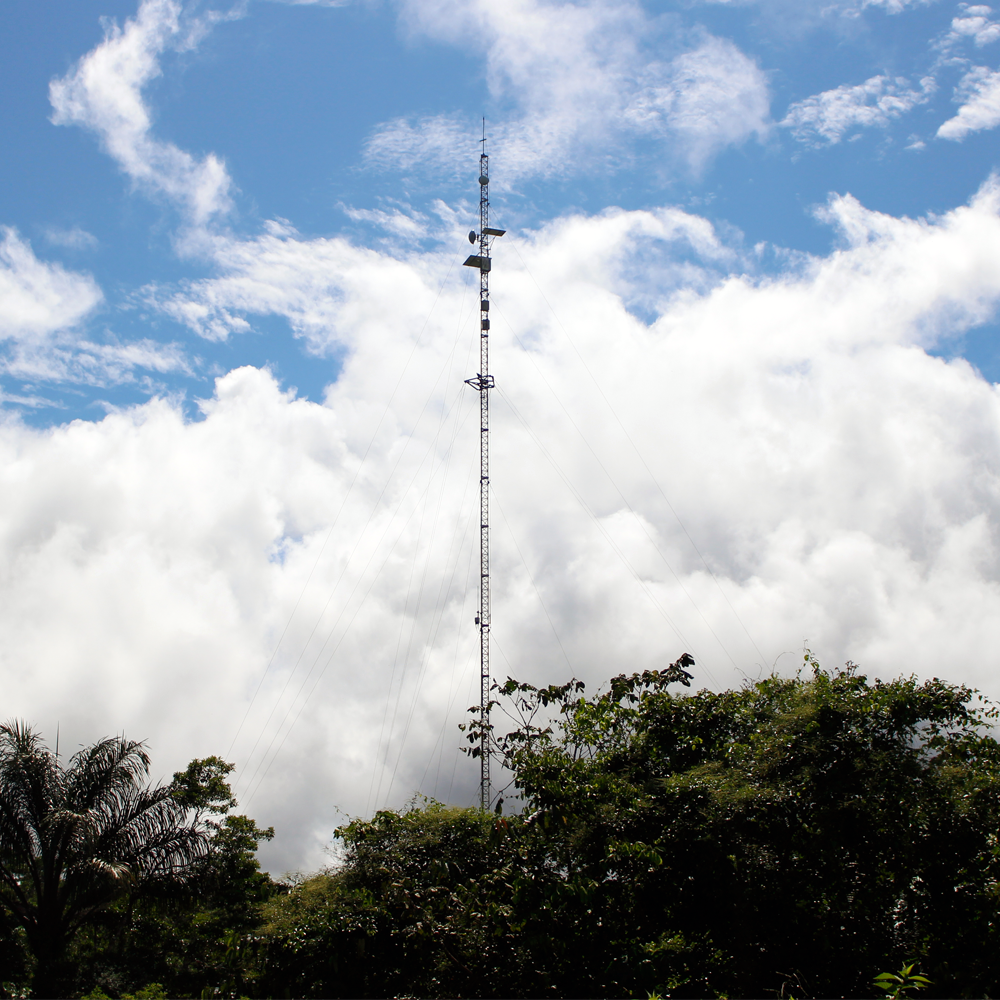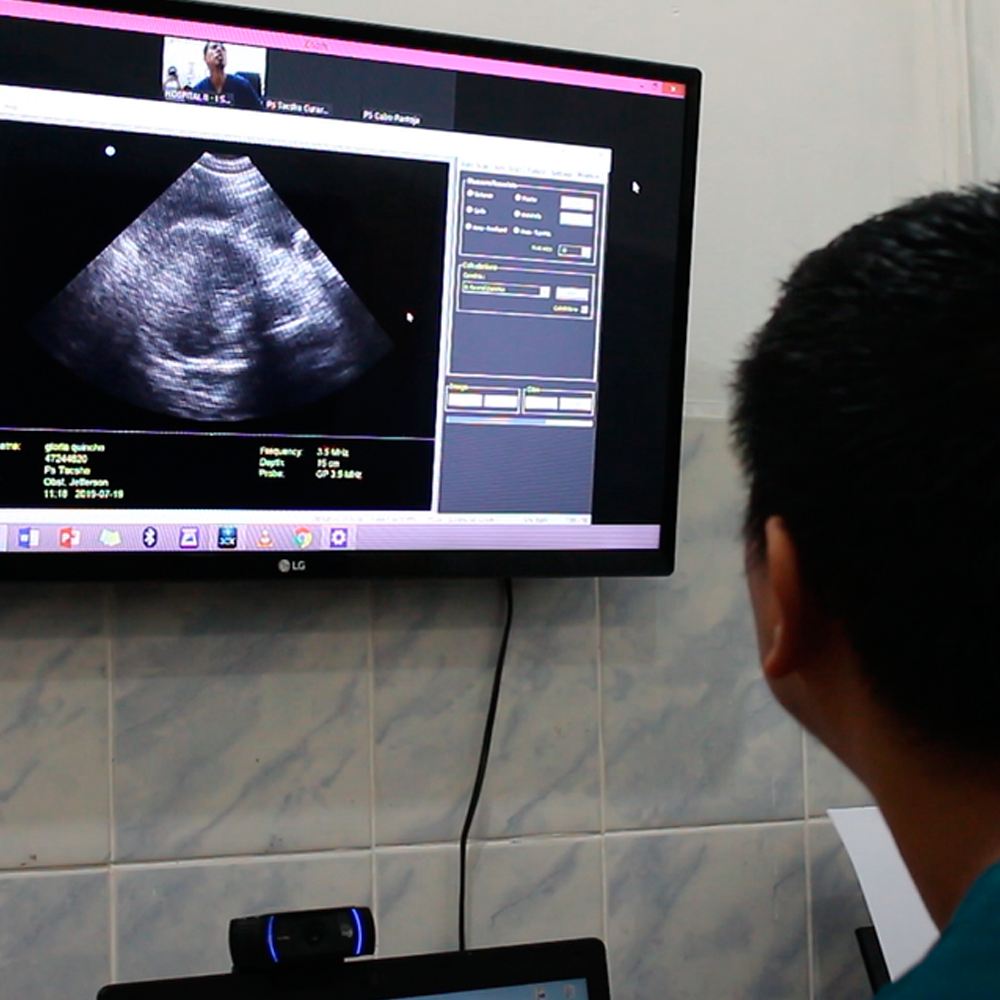NAPO: Social Innovation with Connectivity and Health
The NAPO proyect (“Social Innovation with Connectivity and Health: 3G Cellular Mobiles and Maternal-Infant Care in Amazonian Communities”) is a Research and Cooperation initiative launched in 2016 by EHAS Foundation, the Rural Telecommunications Group of the PUCP, the Peruvian NGO PANGO and the rural telephone operator MAYU Telecomunicaciones, in which Telefónica del Perú and Telefónica I+D also collaborate. The project has the support of the Development Bank of Latin America (CAF) as the main financer, in addition to the UPM, the Comunidad de Madrid and the AECID since 2019 (Acciones de Innovación para el Desarrollo 2018). The objective of NAPO is the deployment of telecommunication infrastructures in especially isolated areas such as the Peruvian Amazon, seeking to harness the potential of ICTs to improve public health services and open opportunities that empower their populations and achieve sustainable development.

The origin of the NAPO project was the TUCAN3G research project (“Wireless technologies for isolated rural communities in developing countries based on deployments of 3G cellular femtocells”) carried out between 2013 and 2016 by EHAS together with 10 other partners, such as UPC, URJC and PUCP, thanks to the support of the 7th Framework Program of the European Commission. Its objective was the investigation of sustainable and low-cost telecommunication solutions that would bring 3G cellular service closer to rural communities in developing countries. At the close of the project, TUCAN3G implemented a pilot that managed to demonstrate the technical feasibility of bringing these services closer to populations of under 400 inhabitants, with a sustainable business model based on the novel figure of the rural telephone operator.
The new NAPO project was initiated in 2016 and intends to escalate the pilot implemented by TUCAN3G. The goal is to bring 3G cellular service closer to 15 very isolated communities in the Napo River basin, in the Peruvian region of Loreto, based on a social business model and taking advantage of telecommunication networks to strengthen essential services. The formula relies on public-private partnerships to introduce communication tools in poor isolated areas, which contribute to, among other things, improving the promotion, prevention and care of maternal-infant health. The project, which will be extended over 3 years, will also analyze the viability of its replication in other areas of Latin America with similar needs due to their isolation.
NAPO is committed to making use of technology as a key tool to boost development processes in rural areas, as indicated by Sustainable Development Goal Nº 9. The reduction of the digital divide is not only a technological challenge given the barriers created by the isolation of these areas, but also a matter of equity essential in the pursuit for the rights of all people, including those that inhabit the most remote regions. The ease of access to information and communication is a catalyst for socio-economic changes, allowing dynamization of sectors like health (which focuses on this project promoting tools such as Telemedicine and m-Health), education or trade, in addition to influencing social relations, strengthening links between communities and improving the development of human capabilities. This is coupled with the demand of the local population and institutions for improved communication services, as they are aware of the importance of universal access to information and knowledge when striving to achieve an inclusive society.
ENTITIES THAT MAKE THE NAPO PROJECT POSSIBLE:
- EHAS: Technical, economic and design coordination of telecommunications solutions adapted to the context of the Peruvian Amazon and its health needs.
- PUCP (Pontificia Universidad Católica del Perú): Installation of telecommunications and telemedicine networks, training of technical and health personnel and digital literacy of the population.
- MAYU (Mayu Telecomunicaciones): Rural Mobile Infrastructure Operator (OIMR) responsible for the maintenance and sustainability of the 3G mobile network deployed in Napo river.
- PANGO Association: Management and maintenance of public health services provided by the Napo Health Network.
- URJC (Universidad Rey Juan Carlos): Design and evaluation of the deployed telecommunication networks.
- TdP (Telefónica del Perú): Subsidiary of Telefónica that guarantees 3G mobile service to rural communities collaborating with MAYU.
- Telefónica I+D: Search for innovative technologies for the design of telecommunication networks. Validation of business models for scaling the initiative.
- GMV Innovating Solutions: Transfer of its ANTARI telemedicine platform and support to adapt it to and for the Napo Health Network.
- HISPASAT: Provision of satellite transport from the Napo network to Lima, where the central TdP network is.
- GOREL (Regional Government of Loreto): Government body of the Peruvian intervention department and owner of the telecommunication towers used in the NAPO project.
- DIRESA Loreto (Regional Health Directorate): Coordination of public health services of the department of Loreto.
- MINSA (Peruvian Ministry of Health): Institutional support articulated through the DIRESA Loreto and its telemedicine office.
